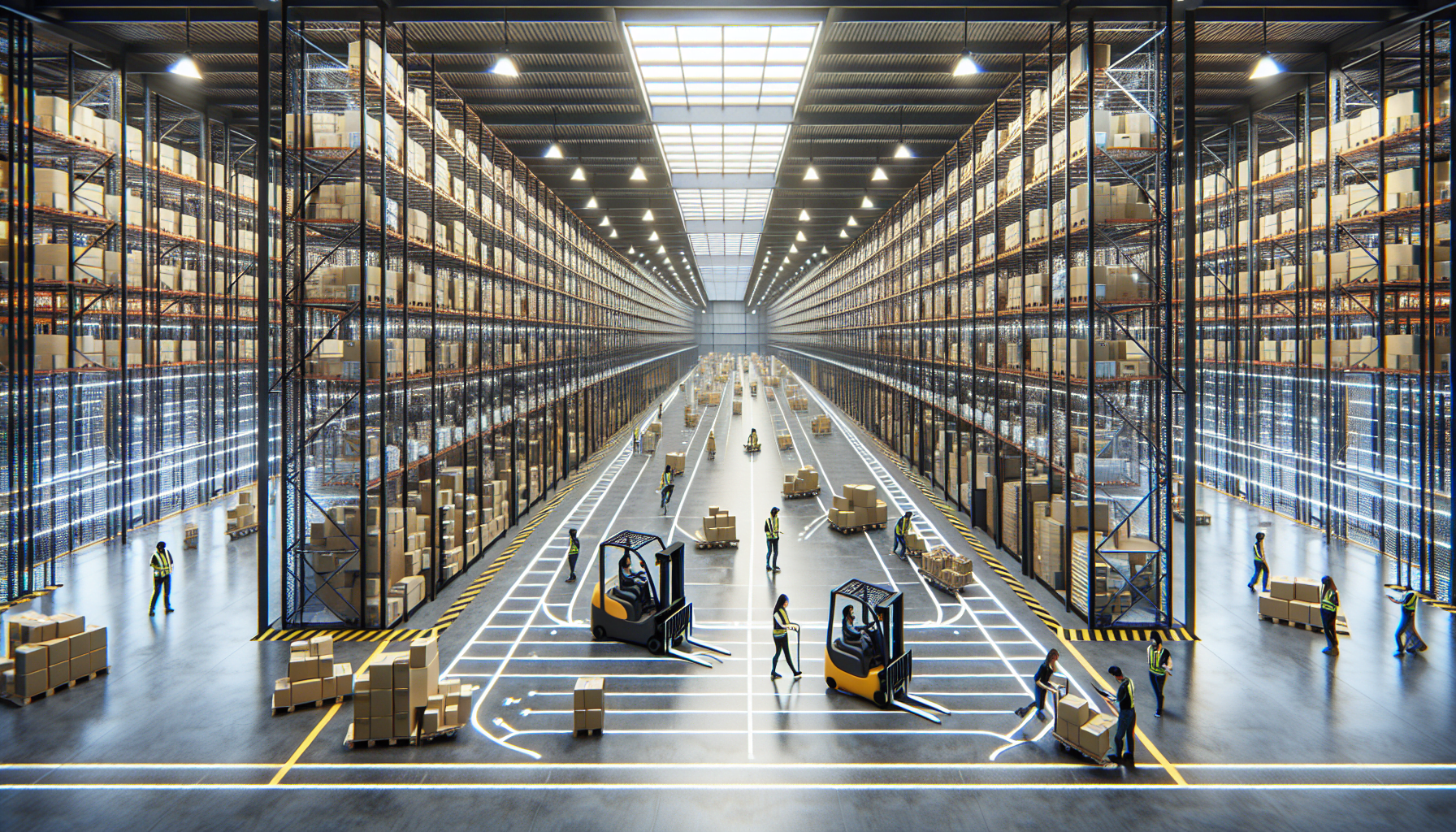When it comes to warehouse operations, ensuring the safety of workers is of utmost importance. One crucial aspect often overlooked is the role of proper lighting in warehouse walkway safety. Illumination within the warehouse plays a vital role in enhancing visibility, reducing accidents, and promoting a safe working environment.
The Importance of Adequate Lighting in Warehouse Walkways
Proper lighting in warehouse walkways is a fundamental requirement for a variety of reasons. Let’s explore the significance of adequate lighting in promoting safety and optimizing operations within the warehouse:
Enhanced Visibility
A well-lit warehouse walkway provides better visibility for workers as they navigate through the facility. Adequate lighting ensures that employees can clearly see potential hazards, such as obstacles, spills, or uneven surfaces, reducing the risk of accidents. It also enhances visibility for operating equipment, such as forklifts, ensuring that pedestrians and equipment operators can easily spot each other, minimizing the chances of collisions.
Accident Prevention
Poorly lit warehouse walkways can create a hazardous environment for workers. Insufficient lighting can lead to trips, slips, and falls, causing injuries. By investing in proper lighting, warehouses can significantly reduce the occurrence of such accidents. Bright and evenly distributed lighting helps employees identify potential dangers and take appropriate precautions to avoid accidents.
Efficient Operations
Along with ensuring safety, proper lighting in warehouse walkways also contributes to overall operational efficiency. Well-lit areas allow workers to locate and access inventory quickly, improving order picking and fulfillment processes. With better visibility, employees can work more efficiently, resulting in increased productivity and reduced operational costs.
Ergonomics and Employee Well-being
Warehouse work typically involves manual labor and repetitive tasks. Inadequate lighting can strain the eyes and cause discomfort, leading to employee fatigue and reduced productivity. By providing sufficient lighting in walkways, warehouses prioritize employee well-being and create a more comfortable working environment. Good lighting conditions reduce eye strain, improve focus, and enhance employee morale.
The Role of HCO Innovations’ Lighting Solutions in Warehouse Safety
At HCO Innovations, we understand the importance of proper lighting in warehouse walkway safety. We offer cutting-edge lighting solutions tailored to enhance safety, productivity, and efficiency within warehouse operations. Our comprehensive range of lighting solutions includes:
- LED Lighting Systems: We provide energy-efficient LED lighting fixtures that offer superior brightness and longevity. LED lights are an excellent choice for warehouse walkways as they provide consistent illumination, require minimal maintenance, and consume less energy compared to traditional lighting options.
- Motion Sensor Lighting: Our motion sensor lighting solutions automatically detect movement and adjust lighting levels accordingly. This ensures that walkways are adequately illuminated when in use and conserves energy when unoccupied, offering a cost-effective and environmentally friendly solution.
- Smart Lighting Controls: Our smart lighting control systems allow warehouse managers to customize lighting levels, schedules, and zones. This flexibility ensures optimal lighting conditions in different areas of the warehouse, based on specific needs and operational requirements.
In addition to our lighting solutions, HCO Innovations also offers advanced technology solutions like our Forklift Pedestrian Detection System. This system combines advanced sensors and real-time data to detect and prevent potential collisions between forklifts and pedestrians in the warehouse. By integrating this system with our lighting solutions, warehouses can further enhance safety and mitigate the risk of accidents.
By leveraging HCO Innovations’ expertise in warehouse optimization solutions, including our advanced lighting solutions, warehouses can create a safer, more efficient, and productive working environment. Ensuring adequate lighting in warehouse walkways is a crucial step towards safeguarding workers and maximizing operational performance.

